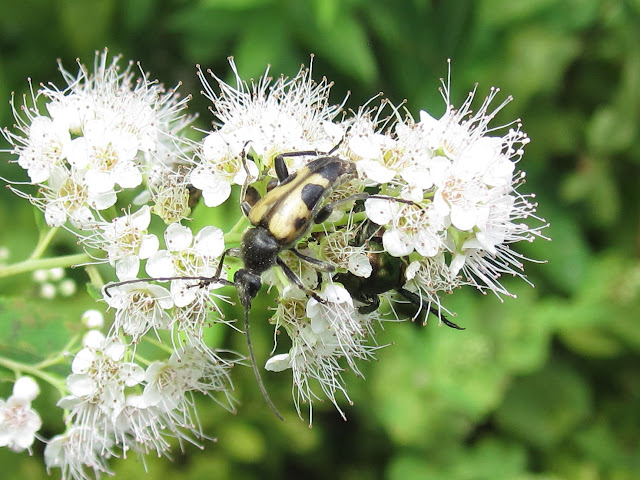 |
| Sunrises over Lake Wicwas are moving the south |
At one of those sunrises I had my first good look this summer at a local osprey, its underside brightly illuminated by the sun as it flew overhead.
 |
| An osprey on its morning fishing route |
Another tell tale sign of late summer is revealed on cool mornings when the warm lake dislodges water molecules into the atmosphere which are immediately condensed into low hanging fog. The sun shining through the layer fashions some of the most ephemeral scenes on a lake.
 |
| Mist rises to reveal the far shore |
The fog has long cleared by noon time, providing clear skies with long views from the lake shores and hilltops. Here is a view of the white mountains from the top of Arbutus Hill, just west of Lake Wicwas.
 |
| New Hampshire's White Mountains from Arbutus Hill |
The summit of Arbutus HIll is accessible from the Hamlin trail head - follow the Yellow Trail to the Magenta Trail, through the Smyth Conservation Easement and up to the view point on Arbutus Hill. It's just over a four mile hike and well worth the trip. Here's a link to the trail map. (This and other maps of hiking trails in Meredith are available at the Meredith Conservation Commission website.)
While you're hiking in any of the conservation areas in Meredith you are likely to come across something interesting, whether plant, animal or mineral. And as fall approaches, both plants and animals will become more evident (the minerals don't change their behavior so quickly). Listen for the chopping of a woodpecker - it will usually be a downy or a hairy woodpecker, but this week I heard the loud hack of a Pileated and was able to track it down using the sound as a beacon.
 |
| Pileated Woodpecker |
He (note the red mustache) was kind enough to continue his work on the oak tree so I could get a video, complete with wood chips flying into the air. The blog doesn't like video, so I posted it on youtube here.
I also saw a Great Blue Heron, though not in its usual venue in the water, instead stalking some small morsel right through the woods at the edge of the lake, probably a frog or a toad.
 |
| A Great Blue Heron stalks its prey |
On the plant side, the Speckled Alder are starting to develop their seed cones.
 |
| Speckled Alder (Alnus rugosa) catkins |
The cones are actually the alder flower and are called catkins. Alders are important trees for many animals; moose, deer, and rabbits take advantage of their low and thick cover, and mammals such as beaver, muskrat, rabbits and moose browse on their bud, twigs and foliage. Many birds eat their seeds and buds, including redpoll, grouse and woodcock. It is also a favorite of beavers for use in their dams and lodges as it is quick to regenerate. [Ref: USDA National Plant Reference Center] Alder has medicinal applications and has even been used to improve water conditions in shrimp tanks! [Ref: The Planted Tank]
Remember the pretty trillium back in May? Well, by late summer those tiny plants have turned into giant leafy creatures, and their flowers have developed large seeds.
 |
| Painted Trillium in its late-summer foliage |
How things change over the summer.
With a little bit of rain this week combined with shorter days and cooler temperatures at the end of August, mushrooms are starting to come on in force. I believe this is the tiny Orange Mycena, less than an inch tall.
 |
| Orange Mycena (Mycena leaiana) |
Look for many more varieties of fungi to sprout up during your forest walks as fall approaches.





























